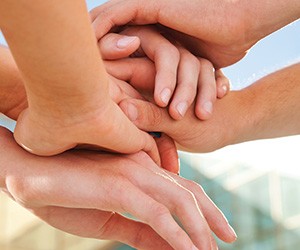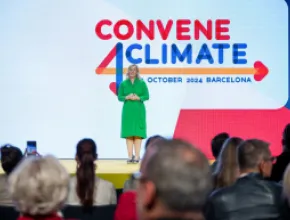In 2000, corporate social responsibility activities were unheard of, while today the majority of planners are including them in their events. The most popular form of social responsibility for meetings is a community, or legacy, project. Community projects fall into the “Feel Good, Look Good” category of CSR, where the project contributes to a sustainable cause and also provides promotional benefits to the sponsoring organization.
If your organization hasn’t already included this type of community charity event, it may be a welcome addition. Participants are asking how to give back to the people of the destinations where meetings are held. The key is to design the best community project during an already busy time. I offer the following tips to get you started.
- Make it personal. The most successful projects always consider how the project will relate to your organization, what is really important to participants, and what type of person will attend. Young, active participants may be more able to plant trees, build shelters and carry food donations. Technology wizards can help a local low-income school program their computers or offer an afternoon of training. Businesses in the energy industry may want to help retrofit community centers to be more energy efficient. Look to the skill set of both your organization and your attendees.
- Partner with established charity volunteer organizations. Make your life much easier by working with an organization that already has a volunteer program in place and can easily work with you and your participants. The easiest way to connect with these programs is by asking the visitors bureau, meeting venue or local vendors for referrals in your meeting destination city. If they aren’t able to help you, try the Hands on Network (a website listing volunteer opportunities), Feeding America or Clean the World, which are nationwide resources.
- Provide donations instead. If the timing of your event doesn’t allow for participants to volunteer for a hands-on project, consider donating. Money is always appreciated, and it can be a powerful experience to have participants bring cans of food, school supplies, blankets, books or professional clothing. However, this type of donation needs to be tailored to the distance attendees must travel, especially if air travel is involved. Some projects charge volunteers a small registration fee that is given to the charity.
- Don’t forget your sponsors. Event sponsors love looking good, so give them an opportunity to be involved in a CSR project. Companies can sponsor the entire volunteer event or a part of it, such as t-shirts, transportation, food and beverage or necessary supplies. Pre-promotion, on-site acknowledgement and post-event media will be important to them. Their support will help you leave a legacy behind.
Leaving a community better than you found it is a powerful way to do business. The business of meetings is no exception.
Nancy J. Zavada, CMP, president of MeetGreen and a co-founder of the Green Meeting Industry Council, recently co-authored her second book, Simple Steps to Saving Green by Going Green. You can follow Zavada’s blog, “Pretentious Musings of a Green Meetings Martyr,” on MeetingsFocus.com. MeetGreen’s website is located at www.meetgreen.com.







